Learning About Jeju Shamanism with Joey Rositano
Last Updated on October 19, 2023
There are over 400 shamanic shrines on the island of Jeju in Korea which the people there have worshipped for centuries, practicing a kind of traditional shamanism specific to Jeju known as muism. Natives on the island still actively practice the traditional shrine worship attending rituals a few times a year but as the island is being developed due to tourism and a contentious military base is being built, the grounds the shrines are located on are being encroached upon and some fear some of the shrines will be demolished all together in the near future.
Jeju Island is one of the most popular tourist destinations in Korea. In fact, the flight from Seoul to Jeju is the most flown route in the world. But most people don’t learn about this unique culture and history when they visit.
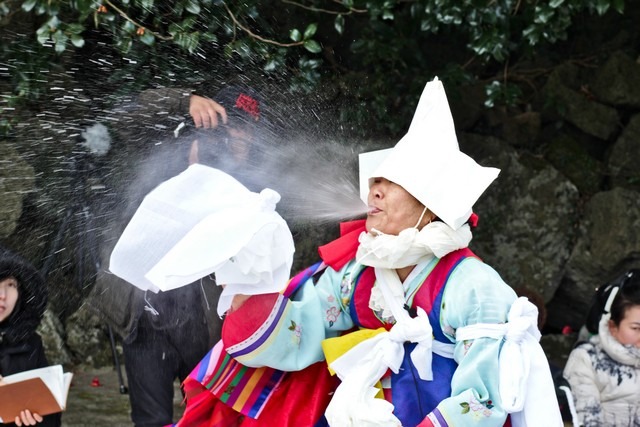
(This post contains affiliate links, which means I receive a certain percentage of a sale if you purchase after clicking. These funds go to maintain the site. Thank you for your support.)
Who is Joey Rositano?
Joey Rositano contacted me a couple weeks back and asked if I could help share the story of the shrines on Jeju and the documentary and photo book he has made to spread the word and preserve some of the stories and myths that can be learned.
Rositano, originally hailing from Nashville, Tennessee of the US, has lived and worked on the island of Jeju since 2006 and first became enthralled with the tales of shrine worship when he was new to the island. The way that people introduced the ideas and practices to him, it seemed as if the rites and rituals were archaic and had disappeared yet when he set out to explore, he found that in the countryside, the shrines were actively being worshipped in a polytheistic religion that few in the city of Jeju even know about.
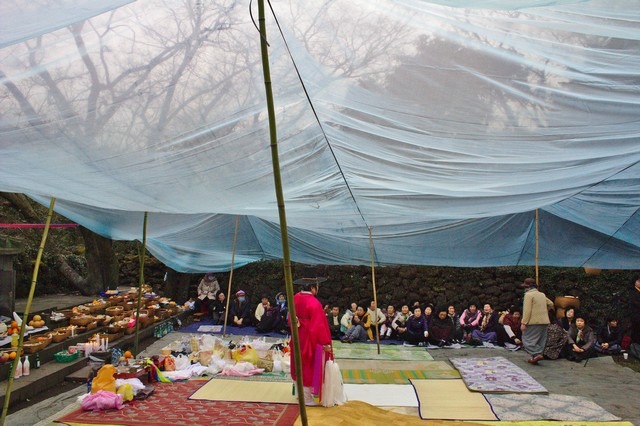
This inspired Rositano to focus on the shrines and make a documentary titled “Sprits: The Story of Jeju’s Shamanic Shrines” and subsequently the 220 full color page photo book. The book is able to share more of Rositano’s intimate experiences visiting the villages, meeting the villagers and viewing the shrine worship.
Rositano hopes that by providing information in English on muism and the associated rites and worship, more shrines will be protected.
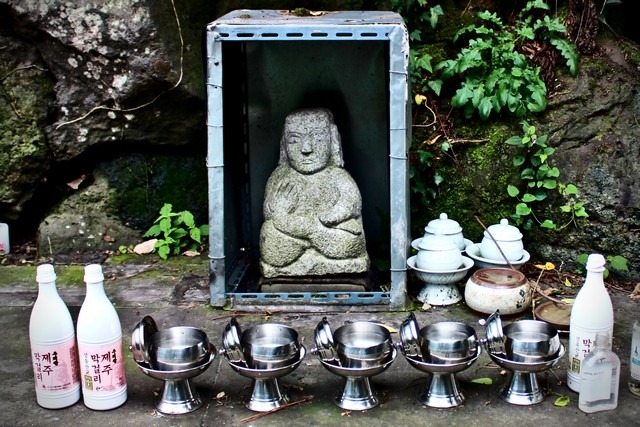
What you should know about Jeju Shamanism
Interestingly, all of the worship practices use the UNESCO recognized endangered Jeju dialect, or Jeju-eo, which is still the majority language spoken in the villages of the island, mainly by the elderly population. While not everyone was immediately open and welcoming to Rositano’s efforts to not only learn more about this cultural and religious heritage, eventually the villagers and the local scholars opened up, taught him and now he’s hoping to shine a spotlight on a tradition that may soon disappear.
“Jeju’s muism is one of the strongest living examples of Eurasian polytheism that we have in the world. It’s quite likely that this religion will die with the elder generation…” said Rositano “what can be salvaged as a physical representation of that culture are the shrines.”
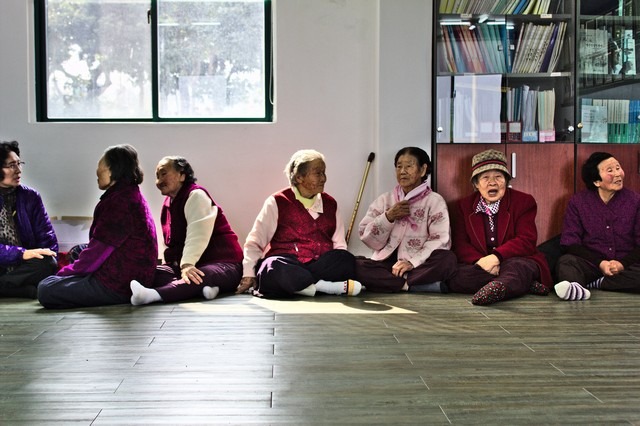
Why it’s important to learn about Shamanism on Jeju Island
While many shrines are being left to the elements, some, like the Sulsaemit Shrine in Juksung Village, are being deliberately desecrated. Locals believe that Protestants that have come from the mainland are the culprits because as they told Rositano, any Jeju native, a believer or not, wouldn’t have done such a thing.
When the shrine was attacked at the end of 2013 and Rositano heard about it, he began asking questions. Who destroyed the shrine isn’t as important to Rositano as the fact that it was destroyed. The Sulsaemit Shrine is just one of many that he feels needs to be protected now more than ever as the island of Jeju undergoes a transformation. The heartbreaking story behind the shrine and its dark history can be found in his book along with many more tales of not only myth and intrigue but strength and compassion.
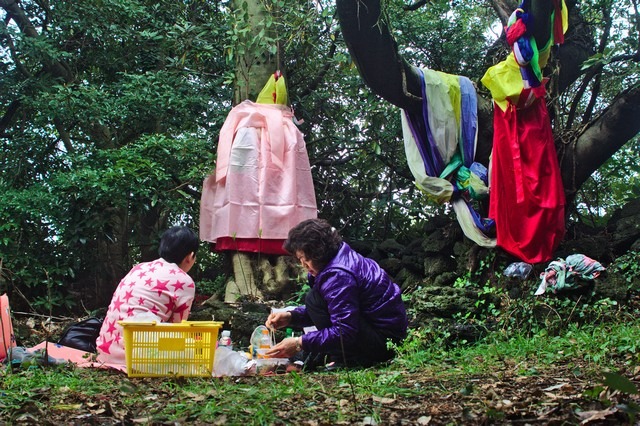
Currently, there are around five shrines that are protected by law and others are up for the same designation. In the case of Sulsaemit, a group took initiative to clean up and rebuild the shrine and hopefully it will be a rare example of desecration to the cultural and religious artifacts of muism.
Though not all of the shrines are protected by law, there are villagers and groups that are taking it upon themselves to repair and protect some of the shrines. In Songdong Village, a group of young people repaired a shrine and activists in Gangjung are working to protect nearby shrines that have been damaged due to construction. Rositano says he thinks this is a winnable battle.
Get the book and learn more
In its pages, Spirits: The Photo Book, you will uncover a variety of religious practices that makeup Jeju’s muism as practiced by its elderly population, including rare ceremonies performed by the island’s famed women divers (haenyo), to ensure safety while performing their treacherous work.
The book is set to be released the second week of June 2015 and will be available for purchase via his blog and his project’s facebook. It will offer a rare chance to see into a piece of Jeju heritage that few know about today.
Did you like this post? Pin IT!
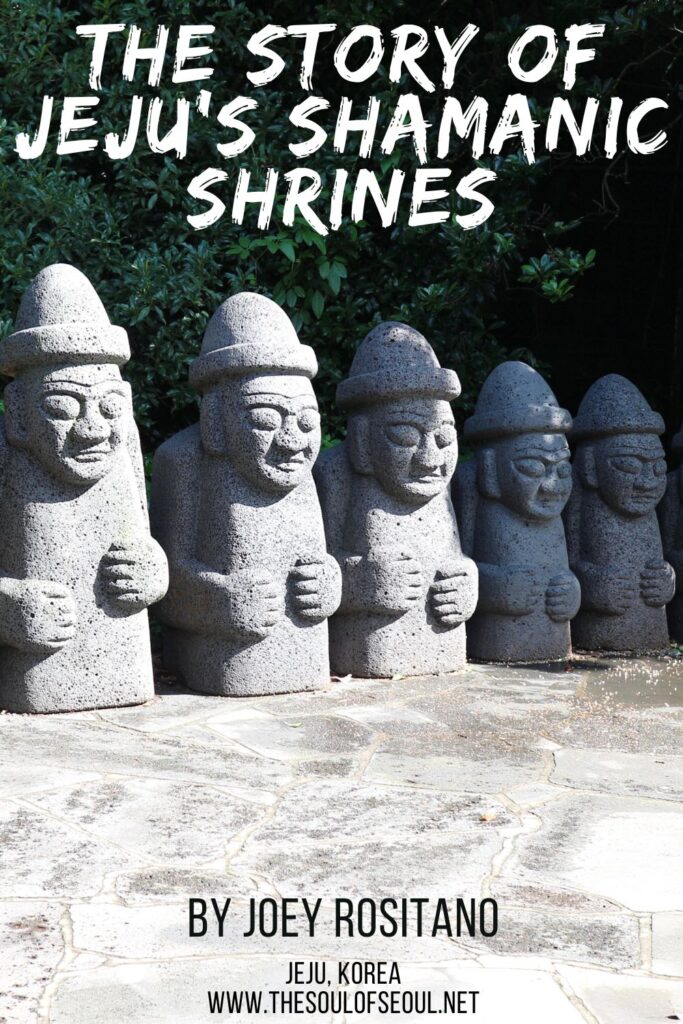
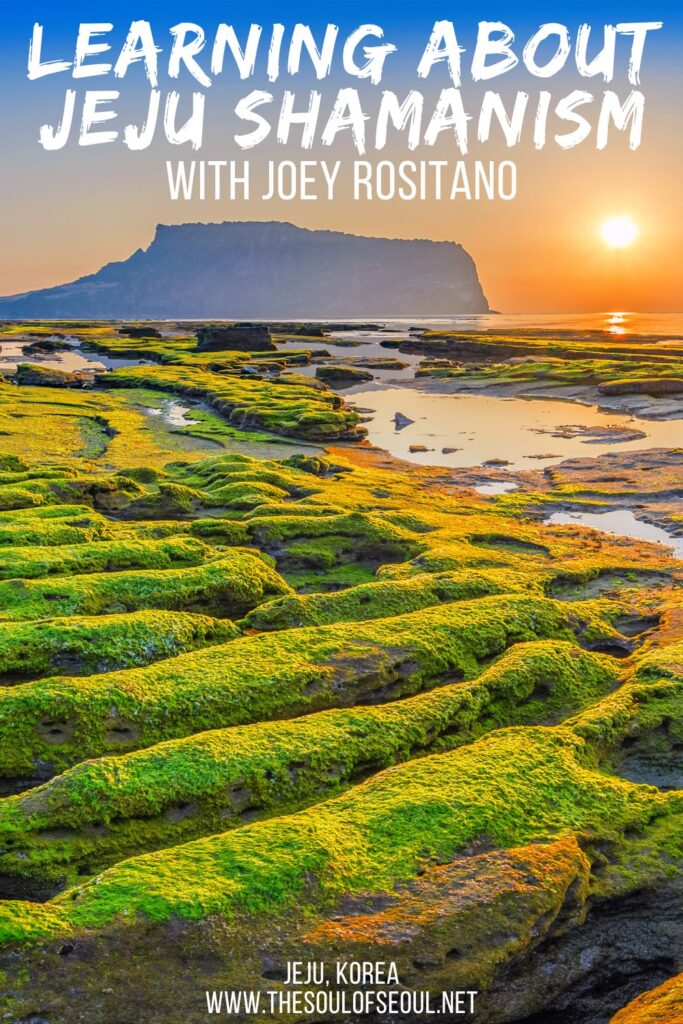


One Comment
damon
this is important work, thanks for sharing!